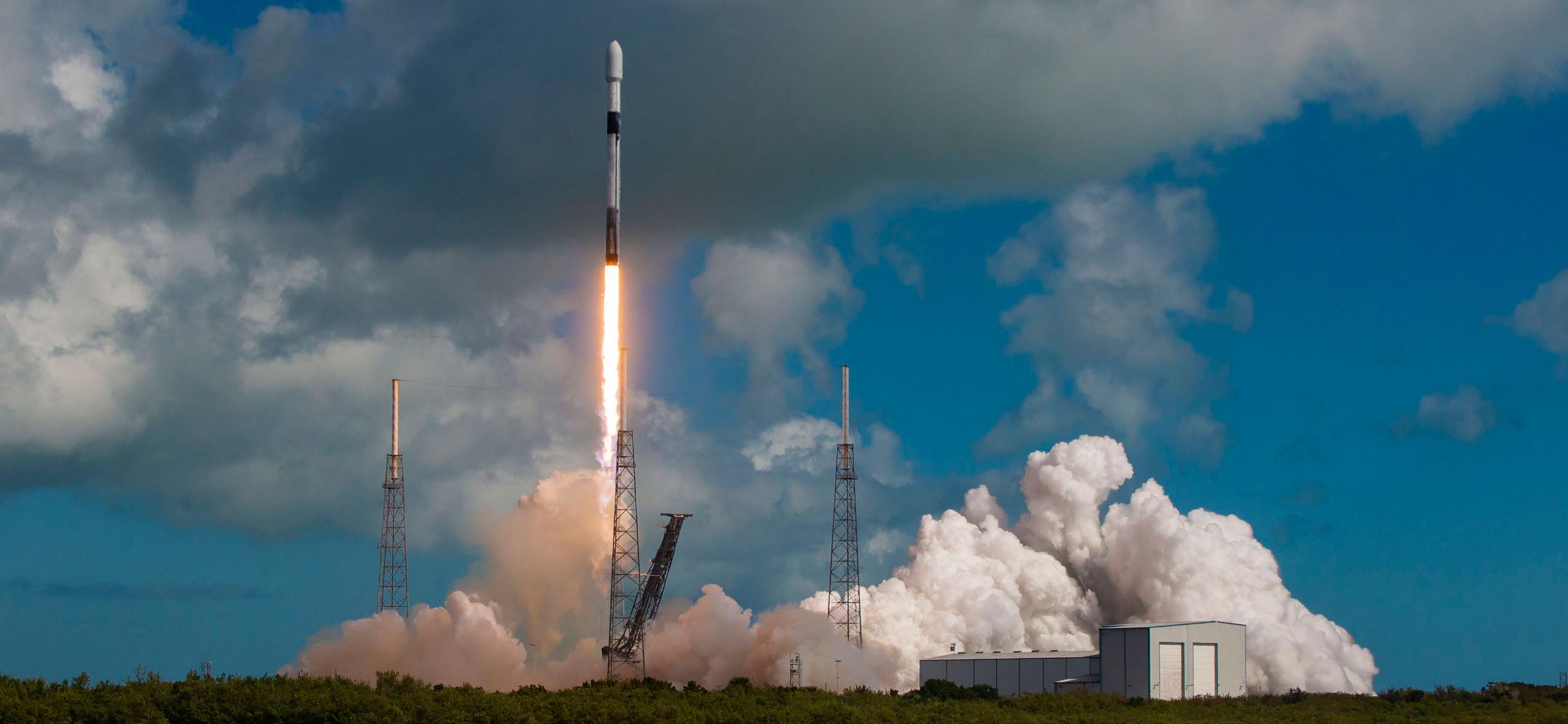
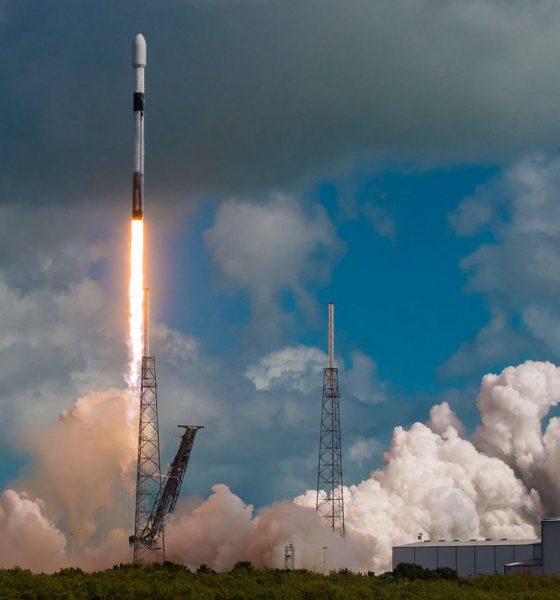
News
SpaceX expends Falcon 9 booster for the first time in almost three years
For the first time since January 2020, SpaceX has intentionally expended a Falcon 9 booster instead of attempting to recover the rocket at sea or on land.
Weighing around 6.6 tons (~14,600 lb) at liftoff, the rare mission sent Intelsat’s twin Maxar-built Galaxy 31 and 32 communications satellites to a high geostationary transfer orbit (GTO) that will allow them to start operating more quickly than a standard GTO would. To launch such a heavy payload to such a high ‘supersynchronous’ transfer orbit, SpaceX – at Intelsat’s request and for a fee – removed all landing-related hardware from Falcon 9 and did not attempt to recover the first stage.
Instead, the rocket put all the propellant that would have otherwise been saved for recovery into its first and only burn, reaching as high a speed as possible before separating from the second stage. Flying for the 14th time since its March 2019 debut, Falcon 9 booster B1051 didn’t perform a controlled flip or attempt to land on a SpaceX drone ship. It’s more likely that the few-dozen-ton rocket – now drained of propellant – reentered Earth’s atmosphere with no control at a speed of roughly 2.7 kilometers per second (~6000 mph), broke apart when it slammed into that atmospheric ‘wall,’ and crashed into the Atlantic Ocean as a cloud of debris.
Having already flown 13 times before its 14th and final mission, it’s safe to say that booster B1051 earned its permanent retirement as an artificial reef. The mission marked the first time a Falcon 9 booster was intentionally discarded since January 2020, when the first Falcon 9 Block 5 booster – B1046 – was destroyed as part of an intentional In-Flight Abort test of SpaceX’s Crew Dragon spacecraft.
Like B1046, B1051 was another fairly new Falcon 9 Block 5 booster. It’s no coincidence that most of the first five or so boosters have been or will be intentionally expended. B1047 was first in August 2019, followed by B1046 five months later, and B1051 in November 2022. B1048 and B1050 both suffered in-flight anomalies that – while they didn’t impact the success of their primary missions – resulted in failed landing attempts. After B1051’s demise, only B1049 remains. Next Spaceflight reports that SpaceX will also intentionally expend that booster after its 11th launch, which will send the Eutelsat 10B communications satellite to a different geostationary transfer orbit as early as this month..
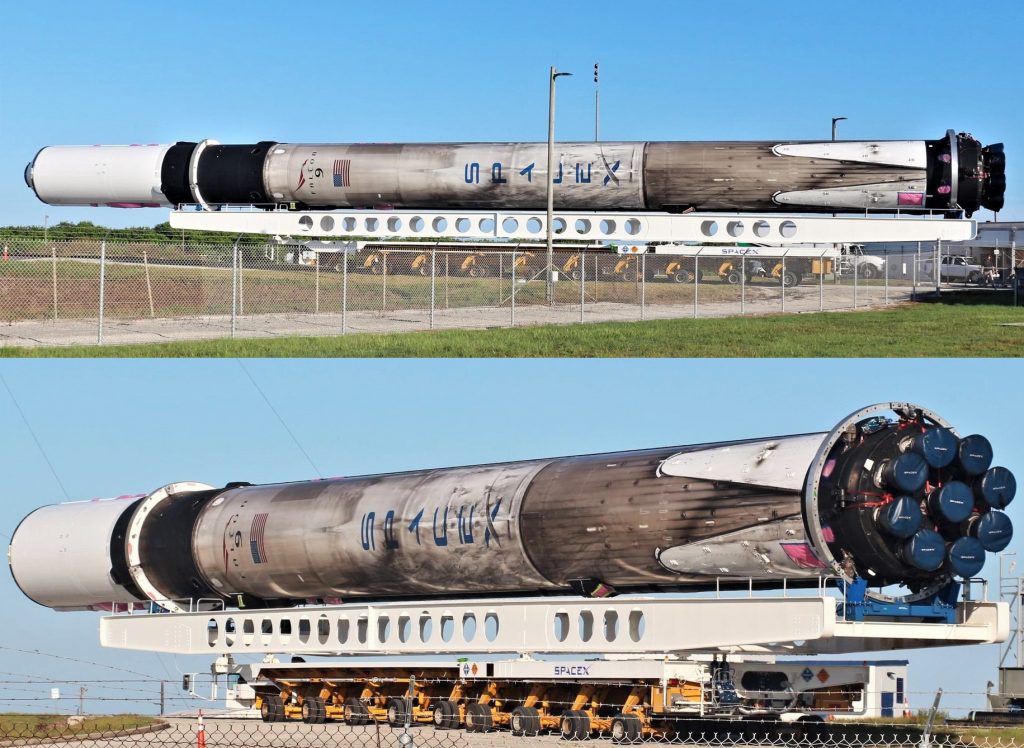
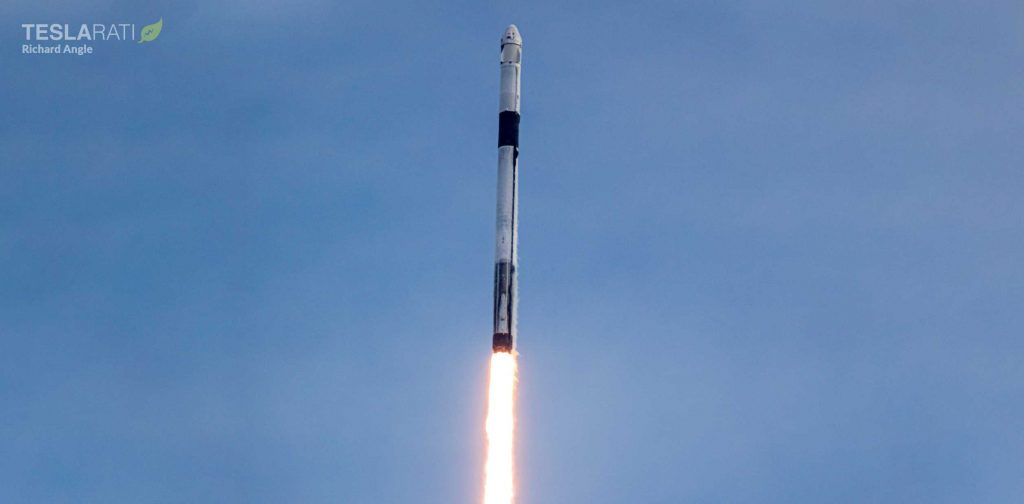
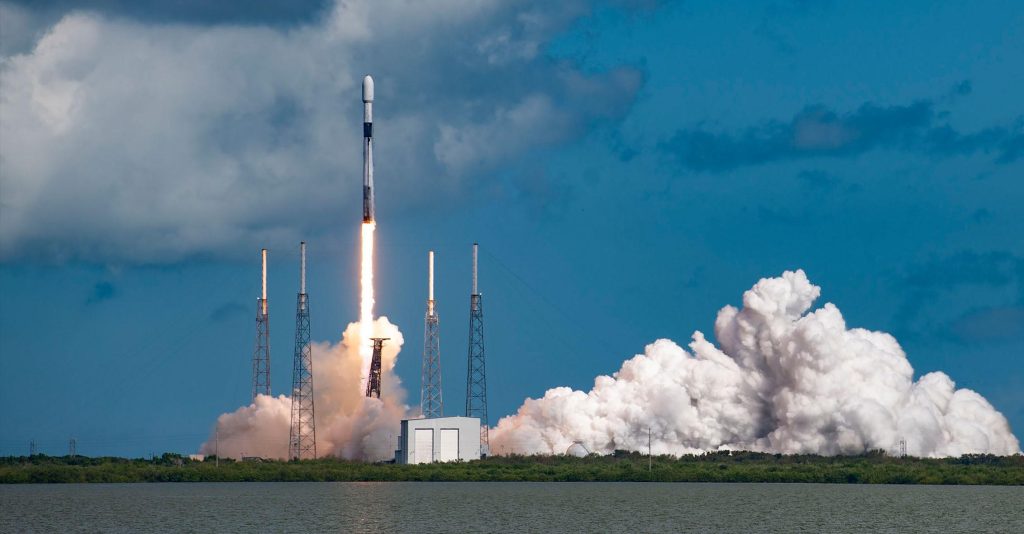
While SpaceX likely charged its customers a healthy fee to expend B1049 and B1051, the company is likely not complaining about an opportunity to refine its fleet of Falcon boosters. Though no new variant has been officially introduced, SpaceX has learned more about the design over the years, and newer Falcon Block 5 boosters include improvements that make them easier and cheaper to operate and reuse. It’s also added four new Falcon 9 boosters to the fleet in less than a year, easing the burden created by expending two older but flightworthy boosters weeks apart.
Once B1049 is gone, that fleet will still have one unflown Falcon 9 booster, four unflown Falcon Heavy boosters, ten flown Falcon 9 boosters, and four flown Falcon Heavy side boosters – the latter of which can potentially be converted into Falcon 9 boosters during Falcon Heavy lulls. B1051 was the third Falcon 9 booster to complete 14 launches, meaning that SpaceX has gotten so good at routine reusability that it can safely assume that each new Falcon 9 Falcon Heavy side booster can fulfill the roles of more than a dozen expendable boosters.
Ultimately, B1051’s sacrifice left Falcon 9’s expendable upper stage with enough performance to boost Galaxy 31 and 32 into a supersynchronous orbit with an apogee more than 58,400 kilometers (~36,300 miles) above Earth’s surface – almost 1.5 times its circumference. Just last month, two recoverable Falcon 9 boosters helped launch a pair of smaller 4.5-ton (~10,000 lb) satellites to almost identical orbits (~57,500 km vs. ~58,400 km). Expending Falcon 9’s booster thus allowed SpaceX to launch almost 50% more payload to a similar supersynchronous GTO, demonstrating the substantial toll booster reuse incurs on launches to higher orbits.
Galaxy 31/32 was SpaceX’s 52nd launch this year and hit a target set by CEO Elon Musk in January. Musk later raised his goal to 60 launches, but SpaceX has managed an average of one Falcon launch every six days for nearly 12 months and has a strong shot at completing another eight launches before the end of the year.

News
Tesla FSD fleet is nearing 7 billion total miles, including 2.5 billion city miles
As can be seen on Tesla’s official FSD webpage, vehicles equipped with the system have now navigated over 6.99 billion miles.

Tesla’s Full Self-Driving (Supervised) fleet is closing in on almost 7 billion total miles driven, as per data posted by the company on its official FSD webpage.
These figures hint at the massive scale of data fueling Tesla’s rapid FSD improvements, which have been quite notable as of late.
FSD mileage milestones
As can be seen on Tesla’s official FSD webpage, vehicles equipped with the system have now navigated over 6.99 billion miles. Tesla owner and avid FSD tester Whole Mars Catalog also shared a screenshot indicating that from the nearly 7 billion miles traveled by the FSD fleet, more than 2.5 billion miles were driven inside cities.
City miles are particularly valuable for complex urban scenarios like unprotected turns, pedestrian interactions, and traffic lights. This is also the difference-maker for FSD, as only complex solutions, such as Waymo’s self-driving taxis, operate similarly on inner-city streets. And even then, incidents such as the San Francisco blackouts have proven challenging for sensor-rich vehicles like Waymos.
Tesla’s data edge
Tesla has a number of advantages in the autonomous vehicle sector, one of which is the size of its fleet and the number of vehicles training FSD on real-world roads. Tesla’s nearly 7 billion FSD miles then allow the company to roll out updates that make its vehicles behave like they are being driven by experienced drivers, even if they are operating on their own.
So notable are Tesla’s improvements to FSD that NVIDIA Director of Robotics Jim Fan, after experiencing FSD v14, noted that the system is the first AI that passes what he described as a “Physical Turing Test.”
“Despite knowing exactly how robot learning works, I still find it magical watching the steering wheel turn by itself. First it feels surreal, next it becomes routine. Then, like the smartphone, taking it away actively hurts. This is how humanity gets rewired and glued to god-like technologies,” Fan wrote in a post on X.
News
Tesla starts showing how FSD will change lives in Europe
Local officials tested the system on narrow country roads and were impressed by FSD’s smooth, human-like driving, with some calling the service a game-changer for everyday life in areas that are far from urban centers.

Tesla has launched Europe’s first public shuttle service using Full Self-Driving (Supervised) in the rural Eifelkreis Bitburg-Prüm region of Germany, demonstrating how the technology can restore independence and mobility for people who struggle with limited transport options.
Local officials tested the system on narrow country roads and were impressed by FSD’s smooth, human-like driving, with some calling the service a game-changer for everyday life in areas that are far from urban centers.
Officials see real impact on rural residents
Arzfeld Mayor Johannes Kuhl and District Administrator Andreas Kruppert personally tested the Tesla shuttle service. This allowed them to see just how well FSD navigated winding lanes and rural roads confidently. Kruppert said, “Autonomous driving sounds like science fiction to many, but we simply see here that it works totally well in rural regions too.” Kuhl, for his part, also noted that FSD “feels like a very experienced driver.”
The pilot complements the area’s “Citizen Bus” program, which provides on-demand rides for elderly residents who can no longer drive themselves. Tesla Europe shared a video of a demonstration of the service, highlighting how FSD gives people their freedom back, even in places where public transport is not as prevalent.
What the Ministry for Economic Affairs and Transport says
Rhineland-Palatinate’s Minister Daniela Schmitt supported the project, praising the collaboration that made this “first of its kind in Europe” possible. As per the ministry, the rural rollout for the service shows FSD’s potential beyond major cities, and it delivers tangible benefits like grocery runs, doctor visits, and social connections for isolated residents.
“Reliable and flexible mobility is especially vital in rural areas. With the launch of a shuttle service using self-driving vehicles (FSD supervised) by Tesla in the Eifelkreis Bitburg-Prüm, an innovative pilot project is now getting underway that complements local community bus services. It is the first project of its kind in Europe.
“The result is a real gain for rural mobility: greater accessibility, more flexibility and tangible benefits for everyday life. A strong signal for innovation, cooperation and future-oriented mobility beyond urban centers,” the ministry wrote in a LinkedIn post.
News
Tesla China quietly posts Robotaxi-related job listing
Tesla China is currently seeking a Low Voltage Electrical Engineer to work on circuit board design for the company’s autonomous vehicles.

Tesla has posted a new job listing in Shanghai explicitly tied to its Robotaxi program, fueling speculation that the company is preparing to launch its dedicated autonomous ride-hailing service in China.
As noted in the listing, Tesla China is currently seeking a Low Voltage Electrical Engineer to work on circuit board design for the company’s autonomous vehicles.
Robotaxi-specific role
The listing, which was shared on social media platform X by industry watcher @tslaming, suggested that Tesla China is looking to fill the role urgently. The job listing itself specifically mentions that the person hired for the role will be working on the Low Voltage Hardware team, which would design the circuit boards that would serve as the nervous system of the Robotaxi.
Key tasks for the role, as indicated in the job listing, include collaboration with PCB layout, firmware, mechanical, program management, and validation teams, among other responsibilities. The role is based in Shanghai.
China Robotaxi launch
China represents a massive potential market for robotaxis, with its dense urban centers and supportive policies in select cities. Tesla has limited permission to roll out FSD in the country, though despite this, its vehicles have been hailed as among the best in the market when it comes to autonomous features. So far, at least, it appears that China supports Tesla’s FSD and Robotaxi rollout.
This was hinted at in November, when Tesla brought the Cybercab to the 8th China International Import Expo (CIIE) in Shanghai, marking the first time that the autonomous two-seater was brought to the Asia-Pacific region. The vehicle, despite not having a release date in China, received a significant amount of interest among the event’s attendees.








